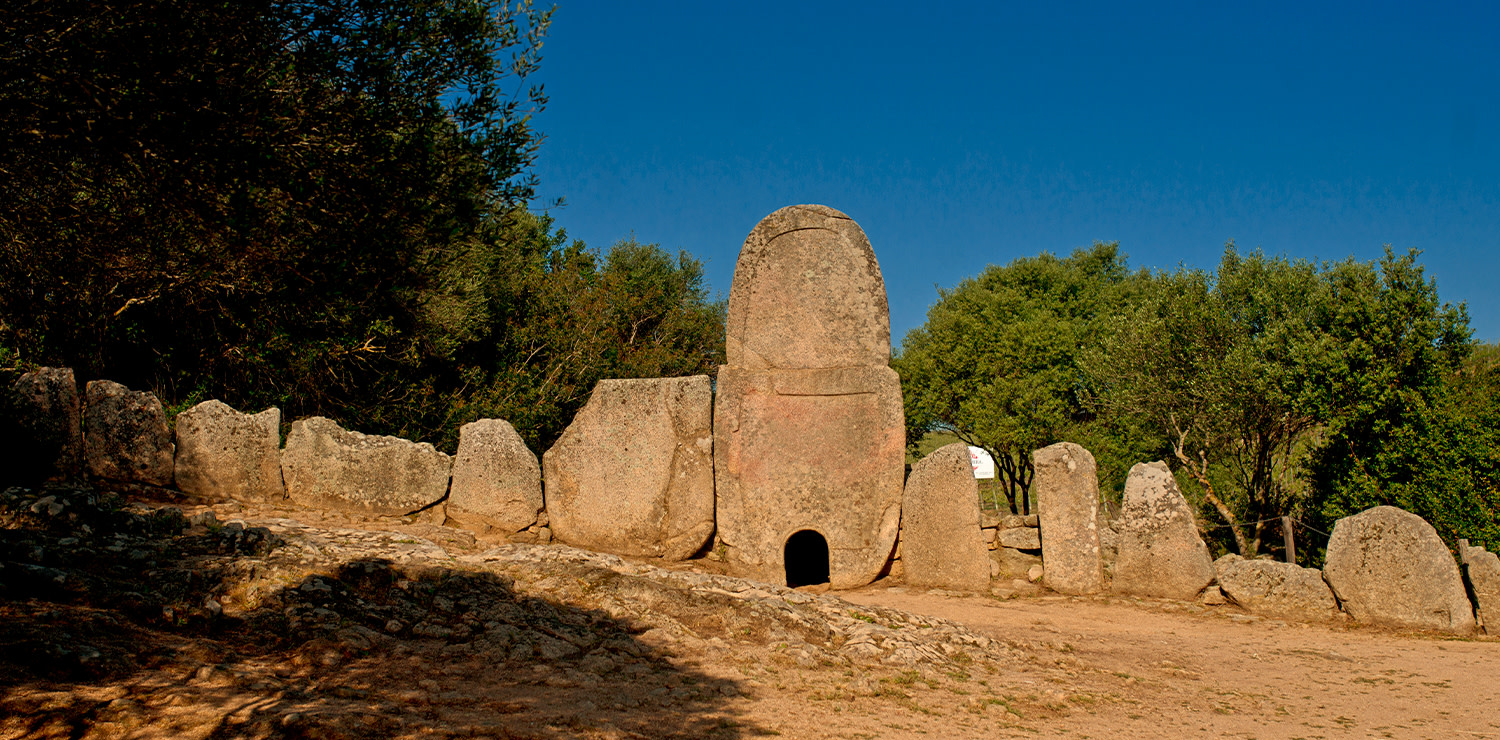Archaeological sites to see near Porto Cervo
Unique treasures telling stories of ancient civilisations and vanished cultures
For lovers of history and archaeology, Porto Cervo offers an evocative itinerary that allows you to discover the remains of ancient settlements and immerse yourself in the charm of its remote past and the history of a unique place in the world. Here is a short guide for you.
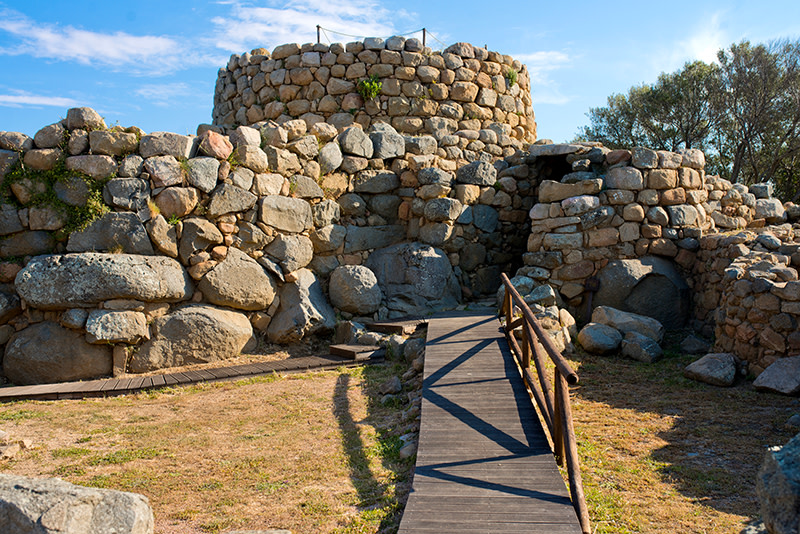 Parco archeologico Arzachena (ph. Dario Garofalo)
Parco archeologico Arzachena (ph. Dario Garofalo)Complex of Nuraghe Albucciu
The ideal starting point is the Albucciu nuraghe. Nestled in a landscape of vineyards and fields used for grazing, just two and a half kilometers away from the town of Arzachena, the Albucciu nuraghe represents one of the most characteristic and relevant examples of “corridor” building, also called protonuraghe, i.e., the ancestors of nuraghi, although the truncated-ogival roofs are affected by the later tholos building technique. Dating from the Middle Bronze Age (15th century B.C.), the nuraghe is hidden in a jagged grove of wild olive trees and Mediterranean scrub. The peculiarity, which differentiates it from various nuraghi in the area, is the construction technique. The massive granite blocks were carefully set against a massive pale granite rock that forms part of the masonry of the main building, as well as a predominant part of the entire nuraghe. Among the most important artifacts the site has yielded are a gammata hilt dagger, a bidder's statuette, and a bronze storage room. The objects allow the Albucciu Nuraghe to be dated between the end of the Middle Bronze Age and the Iron Age (c. 1400-650 B.C.). In addition to the nuraghe, the archaeological area also includes the remains of circular huts 80 meters from the complex, the remains of the Giants' tomb known as Tomba Moro. Not far away is also the nuragic temple of Malchittu.
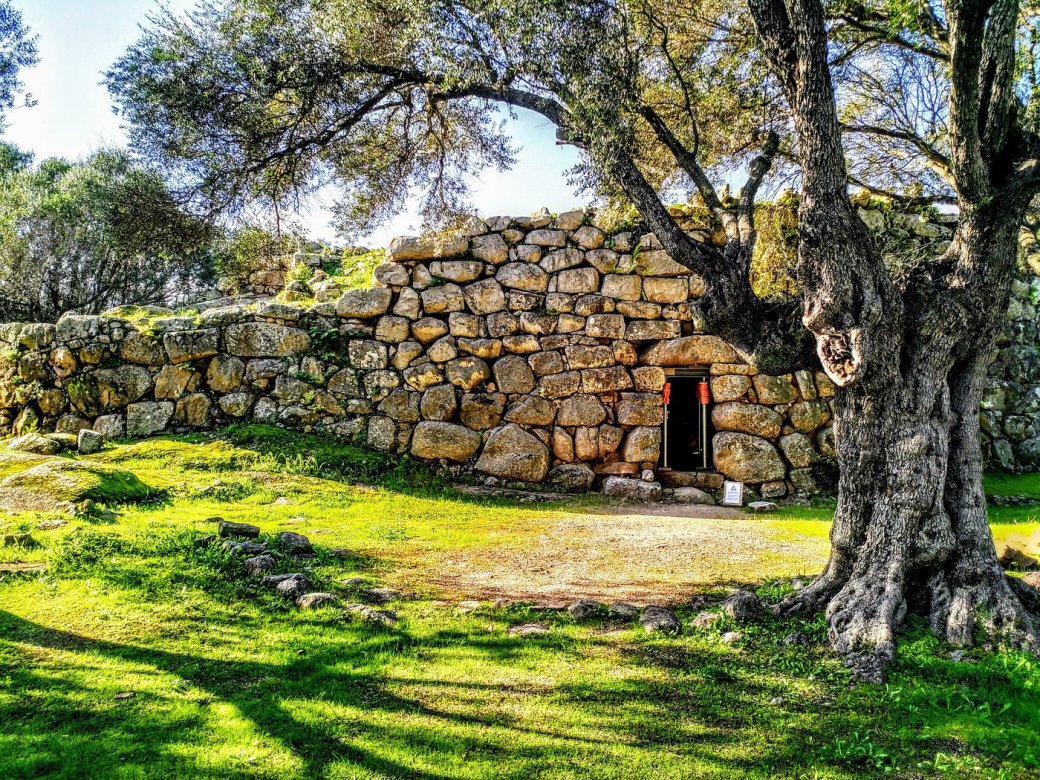 Complesso di Nuraghe Albucciu
Complesso di Nuraghe AlbucciuThe archaeological site of Coddu ‘Ecchju’
One of the most important examples of Nuragic funerary architecture is located at Capichera, about 6 kilometers from the town of Arzachena. It is reached by driving along the provincial road to Luogosanto.
Complex of La Prisgiona
About 1 km away is the nuragic complex of La Prisgiona, the file 600 m as the crow flies from the famous tomb. The site includes an imposing nuraghe and a nuragic village, the life of which spans a chronological span from the 14th century BC to the early 8th century BC. Several centuries later, a brief frequentation in Roman times follows.
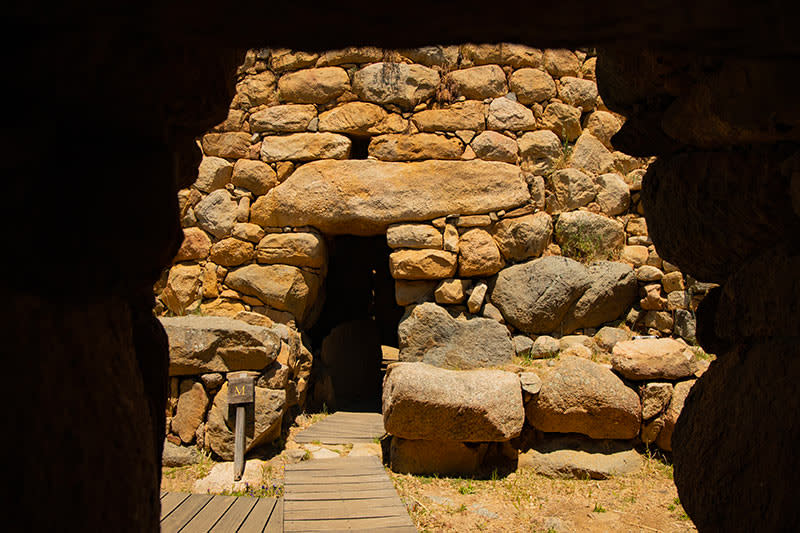 La Prisgiona
La PrisgionaNuragic necropolis of Li Muri
Continuing along the route, one encounters the Li Muri Necropolis, an archaeological site of great importance that houses numerous tombs dating back to the Bronze Age. The Li Muri archaeological site, located one kilometer from the Li Lolghi Tomb of the Giants, represents the oldest site in the archaeological park and dates back 6,000 years. The burial circles are among the oldest evidence of Western European megalithism and find stringent comparisons in southern Corsica, Catalonia and the French Midi. In Sardinia this type of burial seems to be widespread only in the Gallura area, particularly in the Arzachena area. The necropolis consists of four burial circles tangent to each other, ranging from 5 to 8.5 meters in diameter. Within each circle, a rectangular lithic chest contained one or at most two bodies, in a huddled position. The bottom of the tomb and the bodies were sprinkled with red ochre, a substance that symbolized regeneration.
Tombs of the Giants of Coddu Vecchiu
Impressive burial structures dating from the Bronze Age and characterized by the presence of large stone blocks arranged in the shape of dolmens. The tombs of the Giants of Coddu Vecchiu are considered among the most spectacular on the island and include a gallery tomb built between the 21st and 19th centuries B.C. and an exedra, or semicircular space in front of it, added between the 18th and 17th centuries B.C.
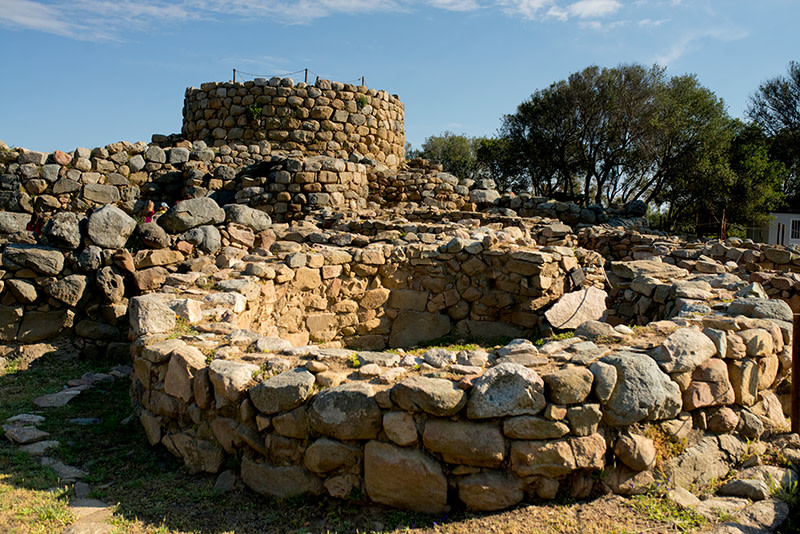 Tombe dei Giganti di Coddu Vecchiu (ph. Dario Garofalo)
Tombe dei Giganti di Coddu Vecchiu (ph. Dario Garofalo)A finding of coins from the 4th century AD.
A rich deposit of follis dating to the first half of the 4th century AD has been found in the seas off Arzachena. According to an initial estimate, made on the basis of the total weight of the find, the number of large bronze coins would be between 30,000 and 50,000. The discovery was made by a private citizen during a dive, when he noticed metal remains at shallow depth, not far from the shore.




